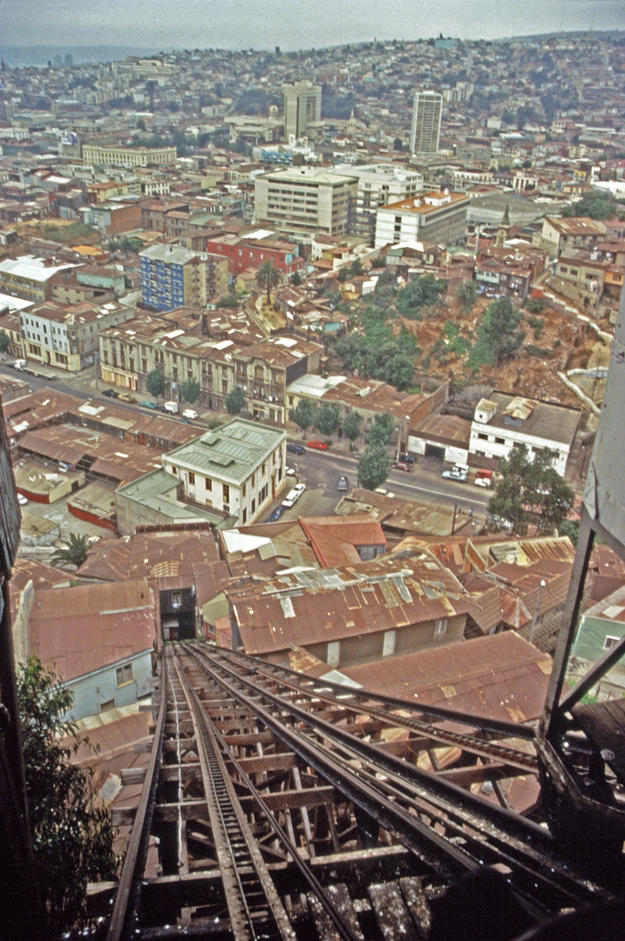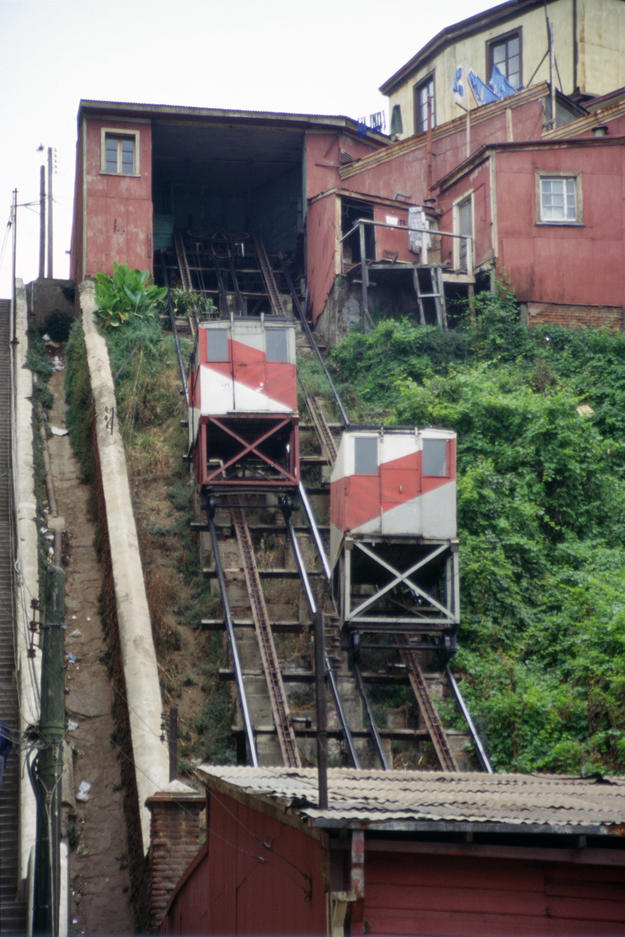With its labyrinth of interconnected stairways, cobblestone alleys, and cheerfully painted houses, Bellavista Hill is one of the most distinctive of Valparaíso’s 45 hill neighborhoods. The majority of its houses were constructed between 1880 and 1940 when the neighborhood’s economic and social lifeline was a system of funiculars that climbed the precipitous slopes, carrying people and goods like a series of elevators on wheels. In its heyday, “the elevators of Valparaíso” had 31 station houses perched at points across the city’s steep terrain.
Valparaíso, a vibrant seaport, began to decline after the construction of the Panama Canal in the early 1900s. The wide nautical passage was preferred by commercial shippers to the Strait of Magellan, known since the 1500s as a shortcut across Chile between the Atlantic and Pacific oceans. Without the commerce once generated by the Straits, Valparaíso suffered a major economic downturn that affected the entire city including the Bellavista Hill neighborhood. The traditional houses, wood-framed with sidings of corrugated metal, were abandoned and left to deteriorate. The funicular system began to show signs of wear, and service was cut on a number of routes. The moribund system isolated Bellavista Hill and many other neighborhoods like it, which had few other means of public transportation.
Revitalization project creates a ripple effect
The elevators of Valparaíso were included on the World Monuments Watch in 1996 and 2014. At the time that the first Watch was announced 24 of the original funiculars remained. Support from the Robert W. Wilson Challenge to Conserve Our Heritage and a grant from American Express allowed for a revitalization project at Bellavista Hill and the development of a study of the elevators’ history and condition.
Just as the demise of the funicular system had brought desolation to Bellavista Hill, refurbishment of one of its components spawned new initiatives and heralded the revitalization of the neighborhood. We restored the upper station house of the Espiritu Santo, as well as a house built in 1898 that presents an outstanding example of the hill district’s vernacular architecture. Local organizations participated in improving the streetscape by bringing back traditional building facades and rehabilitating promenades and other public spaces. The restoration of the station house and streetscape showed that with local community involvement, a sound conservation plan and adequate funding, undertaking a single project can create a ripple effect throughout a neighborhood or even a city.



